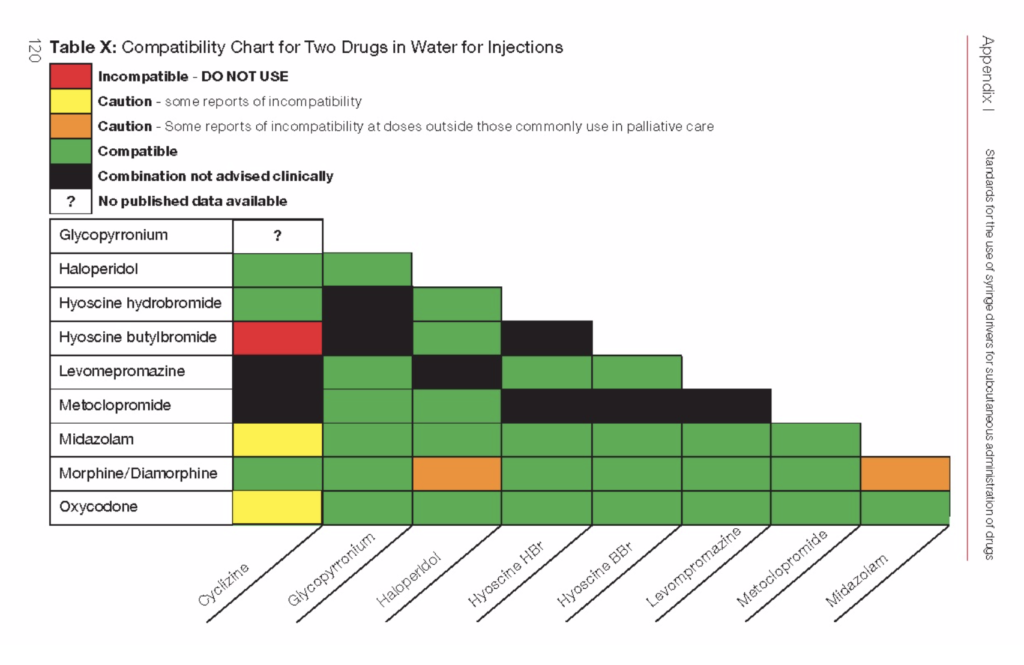

Definitive data on compatibility, stability and efficacy are still lacking. Generally all of the drugs included in the Section: Common Medicines are compatible with morphine and diamorphine, however cyclizine compatibility is concentration dependent. Cyclizine does not mix with oxycodone at therapeutic doses.
Dexamethasone compatibility is unpredictable and is best given in a separate syringe driver/pump if possible or as a bolus subcutaneous dose once daily. A compatibility chart based on studies performed at specified drug concentrations is shown below.

The following precautions will minimise the risk of problems of incompatibility and instability:
- A maximum of 3 compatible drugs in any one syringe driver/pump is recommended.
- Do not leave drugs in a syringe driver/pump for more than 24 hours.
- Seek advice from the Specialist Palliative Care Team if necessary.
The book called The Syringe Driver: Continuous subcutaneous infusions in palliative care (by Andrew Dickman and Jennifer Schneider) serves as a valuable reference source, providing comprehensive review of syringe driver use and administration of drugs by CSCI. It contains an extensive, referenced list of compatibility and stability data relating to drug combinations administered by CSCI.
Notes:
Although subcutaneous administration of these drugs is common and accepted good practice in palliative care, the use of this route lies outside the product license for most of these preparations.
Disclaimer
This Guide is intended for use by healthcare professionals and the expectation is that they will use clinical judgement, medical, and nursing knowledge in applying the general principles and recommendations contained within. They are not meant to replace the many available texts on the subject of palliative care.
Some of the management strategies describe the use of drugs outside their licensed indications. They are, however, established and accepted good practice. Please refer to the current BNF for further guidance.
While WMPCPS takes every care to compile accurate information , we cannot guarantee its correctness and completeness and it is subject to change. We do not accept responsibility for any loss, damage or expense resulting from the use of this information.